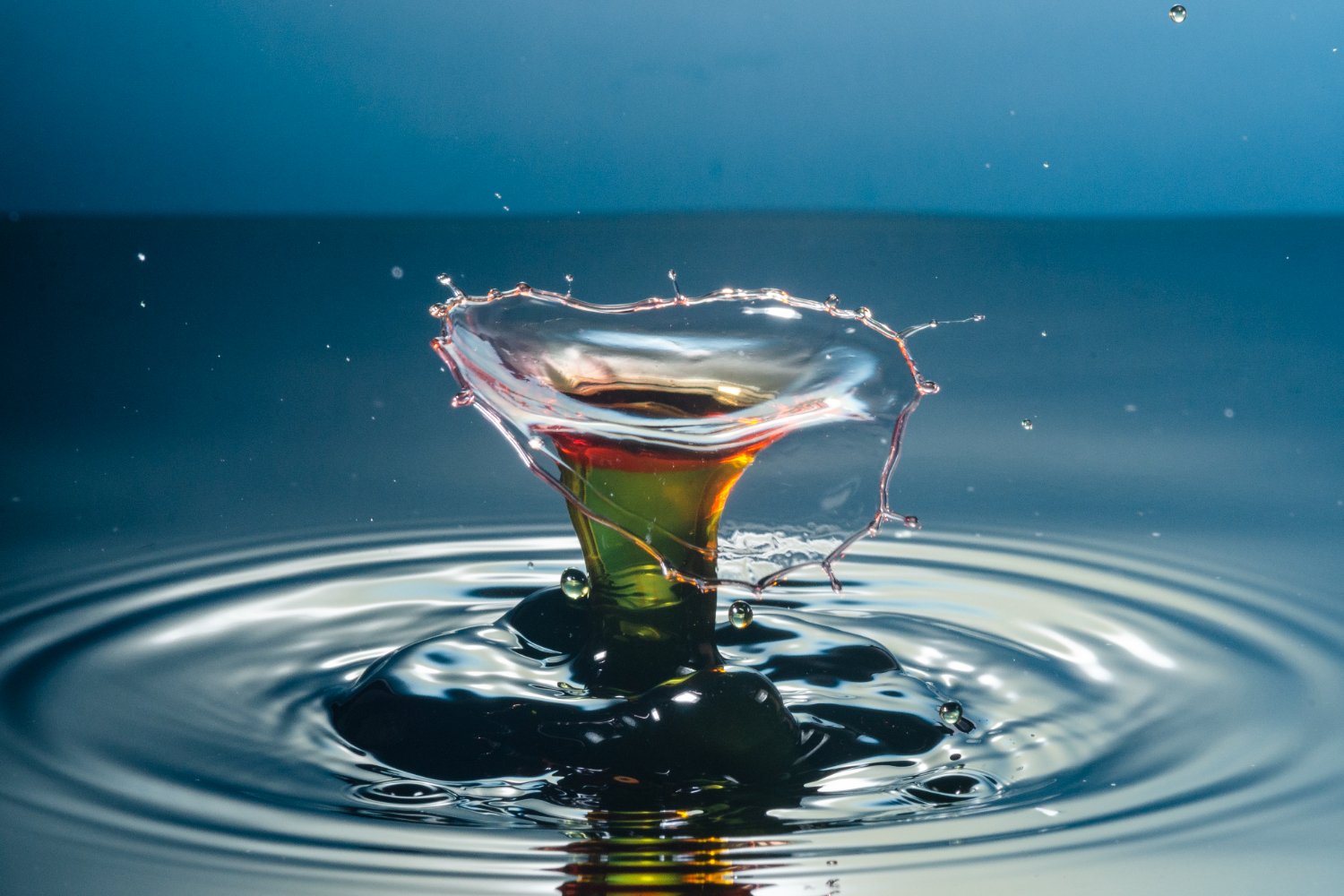A Comprehensive Guide to Amphibians: The Fascinating World of Dual-Living Creatures
November 8, 2024 | by usmandar091@gmail.com

Amphibians are a unique and diverse group of animals that play a vital role in ecosystems around the world. These fascinating creatures are capable of living both in water and on land at different stages of their life cycle. They represent one of the oldest classes of vertebrates and are often considered a bridge between aquatic and terrestrial life forms. This article delves deeply into the world of amphibians, discussing their physical characteristics, behavior, types, habitat, life cycle, and their significance in the natural world.

1. Introduction to Amphibians
Amphibians belong to the class Amphibia, which derives its name from the Greek words “amphibios,” meaning “both kinds of life.” The defining characteristic of amphibians is their ability to live in two different environments—water and land—at different stages of life. They are cold-blooded (ectothermic), meaning that their body temperature is regulated by the environment rather than internally. Amphibians are also distinguished by their smooth, moist skin, which plays an important role in respiration and moisture regulation.
Table of Contents
There are over 8,000 species of amphibians, and they can be found on every continent except Antarctica. They range in size from tiny frogs, less than an inch long, to large salamanders over 5 feet in length. Amphibians are categorized into three primary orders: Anura, Caudata (Urodela), and Gymnophiona (Apoda).
2. Physical Characteristics of Amphibians
Amphibians exhibit a wide variety of physical traits that help them survive in both aquatic and terrestrial environments. Some of these characteristics include:
2.1 Moist, Permeable Skin
The skin of amphibians is one of their most notable features. Unlike reptiles, amphibians do not have scales. Instead, their skin is smooth, thin, and permeable, which allows them to absorb water and oxygen. This is especially important for respiration, as amphibians can exchange gases through their skin. Because their skin is so sensitive to dryness, amphibians are typically found in moist habitats, such as wetlands, forests, and near freshwater sources.
The permeable skin also allows amphibians to absorb chemicals and toxins from their environment, making them particularly vulnerable to pollution. This sensitivity to environmental changes makes amphibians valuable bioindicators, signaling the health of ecosystems.
2.2 Limb Structure
Most amphibians have four limbs, though some species may have lost or modified them over time. For example, caecilians (a type of amphibian) are legless and resemble worms or snakes. The limbs of amphibians are typically well-adapted for their mode of life, whether for swimming in water, climbing trees, or burrowing underground. Frogs, for example, have powerful hind legs that allow them to jump long distances, while salamanders have more elongated bodies and tails, with limbs suited for slow, crawling movement.
2.3 Metamorphosis
Amphibians undergo a dramatic life cycle called metamorphosis, which involves several distinct stages. Most amphibians begin life as eggs laid in water, which hatch into larvae (such as tadpoles) with gills for underwater respiration. Over time, the larvae undergo a series of physical changes, including the development of legs, the absorption of their tails, and the formation of lungs for breathing air. This transformation from an aquatic juvenile to a terrestrial adult is a hallmark of amphibian biology.
2.4 Cold-Blooded Nature
Amphibians are ectothermic, or cold-blooded, meaning that they rely on external sources of heat to regulate their body temperature. They are unable to produce their own heat, so their body temperature fluctuates with the surrounding environment. This is one reason why amphibians are more active in warmer temperatures and are often more abundant in tropical or temperate climates. In colder environments, some amphibians may enter a state of dormancy or hibernation to survive extreme temperatures.
3. Types of Amphibians
Amphibians are categorized into three main orders, each with unique characteristics:
3.1 Anura (Frogs and Toads)
The order Anura includes frogs and toads, which are the most well-known types of amphibians. They have a wide range of sizes, shapes, and behaviors, but they all share several common traits:
- Frogs generally have smooth, moist skin, while toads tend to have drier, bumpier skin.
- Frogs are typically found in or near water, while toads are more commonly terrestrial.
- Anurans are well-known for their jumping ability, which is made possible by their powerful hind legs.
- Many frogs and toads are vocal, using calls to attract mates or establish territory.
3.2 Caudata (Salamanders and Newts)
The order Caudata, also known as Urodela, includes salamanders and newts. These amphibians are characterized by their elongated bodies, tails, and four limbs. Salamanders are often found in damp environments such as forests, caves, and wetlands. Some species, like the axolotl, retain their juvenile aquatic features throughout their lives, a condition known as neoteny.
Salamanders are slow-moving and rely on their moist skin for respiration. They are mostly carnivorous, feeding on insects, worms, and small invertebrates. Some species, such as the fire salamander, produce toxins as a defense mechanism against predators.
3.3 Gymnophiona (Caecilians)
The order Gymnophiona includes caecilians, which are legless, worm-like amphibians. These creatures are primarily found in tropical regions and are often burrowers, spending most of their time underground. Caecilians are the least well-known group of amphibians, and their secretive lifestyle makes them difficult to study. They have a distinct appearance, with a cylindrical body and smooth, shiny skin. Their eyes are small and are often covered by skin or bone, making them reliant on other senses, such as smell, to navigate their environment.
4. Habitat and Distribution
Amphibians are found in a wide variety of habitats, though they are most commonly associated with wetland ecosystems. They require moisture for skin respiration and hydration, which is why they are often found near ponds, rivers, lakes, marshes, and swamps. However, some amphibians, such as certain species of salamanders and toads, are adapted to more terrestrial environments, such as forests or grasslands.
Amphibians are distributed across the globe, with the exception of Antarctica. Tropical regions tend to have the highest diversity of amphibian species, especially in rainforests, while temperate regions host fewer species. Amphibians are most abundant in areas with high humidity, moderate temperatures, and abundant water sources.
5. Amphibian Behavior
Amphibians exhibit a variety of interesting behaviors that help them survive in both aquatic and terrestrial environments. Some of these behaviors include:
5.1 Breeding and Vocalization
Breeding is often the most important event in an amphibian’s life cycle. Many species of frogs, toads, and salamanders engage in vocalizations during the breeding season to attract mates or defend territory. Frogs, in particular, are known for their loud and distinctive calls, which vary by species. Male frogs typically call from a water source to attract females, and their calls are often influenced by environmental factors such as temperature and humidity.
5.2 Metamorphosis and Development
As previously mentioned, amphibians undergo metamorphosis, which involves dramatic changes in their body structure. During this time, they transition from aquatic larvae to terrestrial adults. For example, a frog begins life as a tadpole with gills and a tail, but as it matures, it develops legs, loses its tail, and forms lungs for breathing air. Metamorphosis can take weeks or even months, depending on the species.
5.3 Defensive Strategies
Many amphibians have evolved unique strategies to avoid predation. For example, some frogs and salamanders secrete toxins from their skin to deter predators. Bright colors, such as those found in poison dart frogs, can signal toxicity to would-be attackers. Other amphibians, like certain species of toads, rely on their ability to blend into their environment for camouflage.
5.4 Hibernation and Dormancy
In colder climates, amphibians may enter a state of hibernation or dormancy during the winter months to survive harsh conditions. This is especially common in temperate species that cannot tolerate freezing temperatures. During this period, amphibians slow down their metabolism, reducing their need for food and water. Some species, such as wood frogs, can even survive freezing temperatures by producing antifreeze-like substances in their bodies.
6. The Life Cycle of Amphibians
The life cycle of amphibians typically involves several stages:
- Egg Stage: Amphibians lay their eggs in water, where they are fertilized externally in most species. The eggs are usually surrounded by a protective gelatinous mass to prevent desiccation and predation.
- Larval Stage (Tadpole): Once the eggs hatch, the larvae (commonly known as tadpoles in frogs) emerge. They are aquatic, breathing through gills, and they feed on algae or small organisms in the water.
- Metamorphosis: Over time, the tadpoles undergo metamorphosis, developing legs, lungs, and other features needed for life on land. They gradually lose their gills and tail, transforming into adults.
- Adult Stage: After metamorphosis, the amphibian is fully developed and capable of living on land. Adults typically return to water only to breed, completing the cycle.
7. Amphibians as Pets
Amphibians are popular in the pet trade, especially species like frogs, newts, and salamanders. They are relatively easy to care for but require specific conditions to thrive. Pet amphibians typically need a controlled environment with access to both water and land areas, and they require specific temperature and humidity levels to stay healthy.
It’s essential for pet owners to provide appropriate diets, usually consisting of live insects like crickets, worms, or small fish, depending on the species. A proper habitat, including a clean and safe environment, is crucial for the well-being of amphibian pets.
8. Conservation and Threats to Amphibians
Unfortunately, amphibian populations are declining globally due to a variety of threats. Habitat destruction, pollution, climate change, invasive species, and diseases like chytridiomycosis (a fungal infection) have caused significant declines in many amphibian species. In fact, amphibians are considered one of the most endangered groups of animals on the planet.
Conservation efforts are underway to protect amphibians, including habitat restoration, captive breeding programs, and the banning of harmful chemicals like pesticides. Many organizations are working to raise awareness about the importance of amphibians in ecosystems and their role in maintaining biodiversity.
9. Conclusion
Amphibians are remarkable creatures that have adapted to live both in water and on land. Their unique biological features, life cycle, and behavior make them a crucial part of the natural world. Despite their importance, amphibian populations are under threat from human activity and environmental changes. By understanding the biology, behavior, and conservation needs of amphibians, we can work to protect these fascinating creatures and the ecosystems they inhabit.
RELATED POSTS
View all


